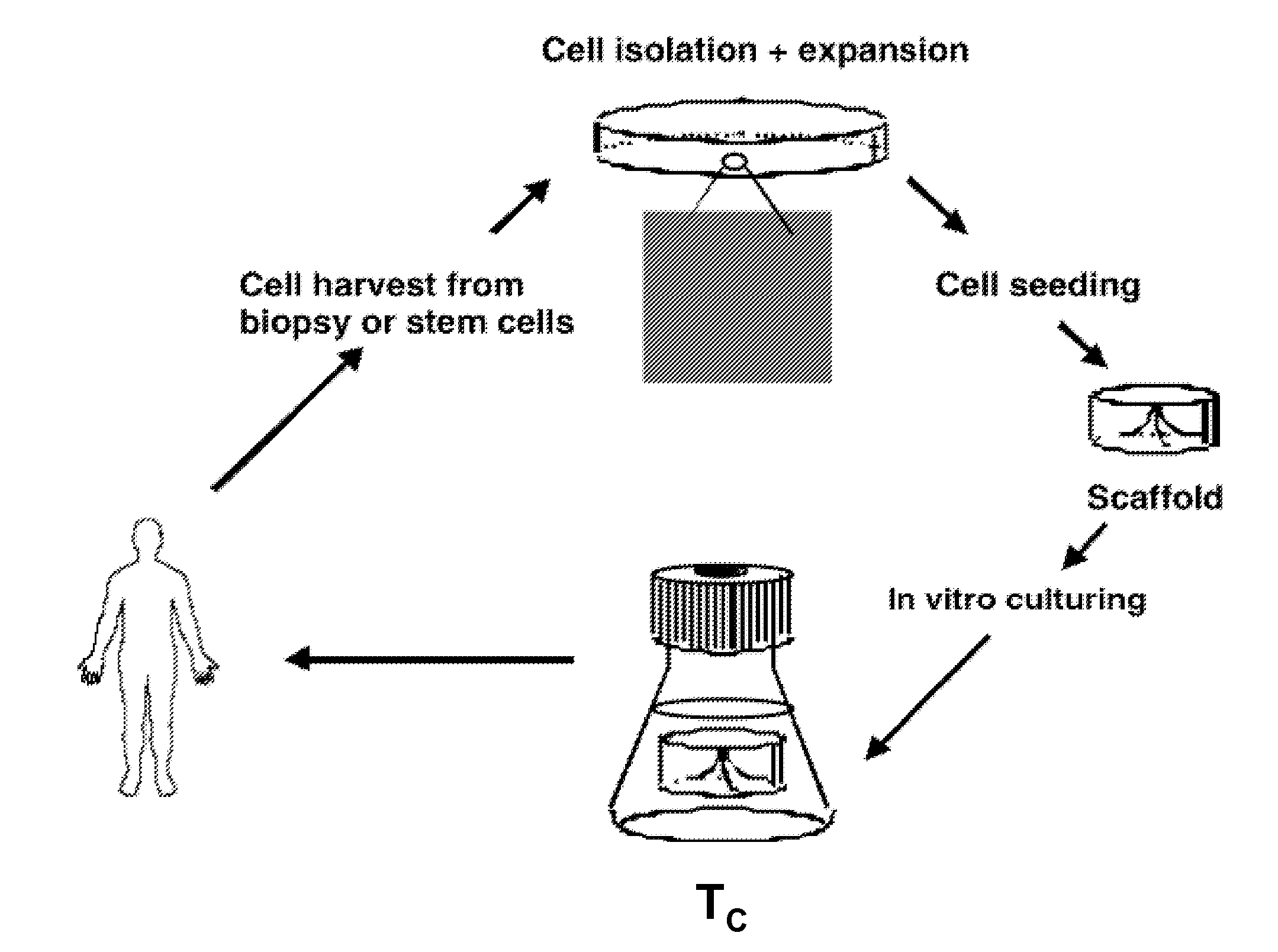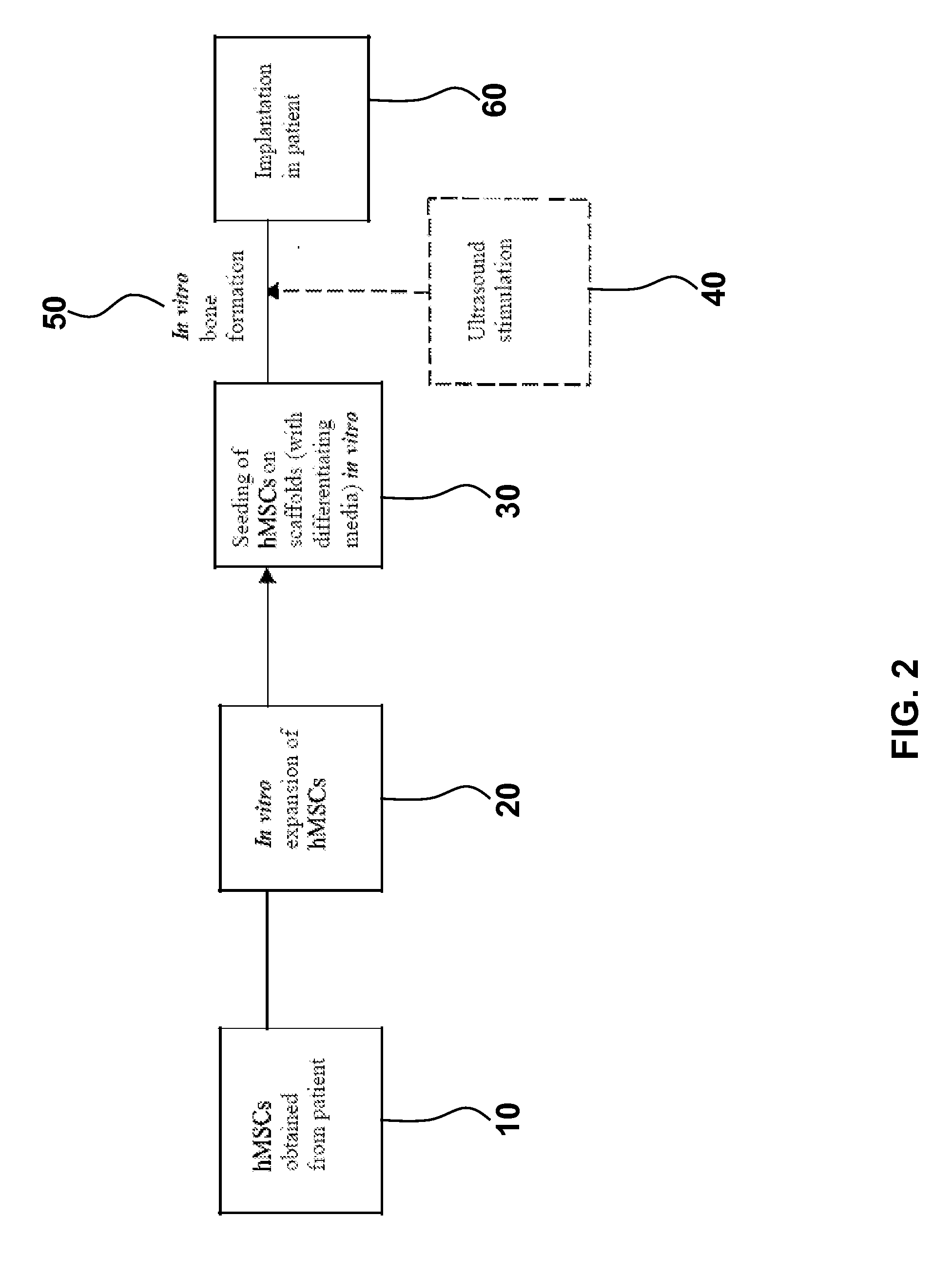Ultrasound accelerated tissue engineering process
- Summary
- Abstract
- Description
- Claims
- Application Information
AI Technical Summary
Benefits of technology
Problems solved by technology
Method used
Image
Examples
Embodiment Construction
[0035]“Ultrasound” or “ultrasonic” generally refers to sound waves having a frequency greater than the upper limit of human hearing, such as greater than about 20 kHz. “Sonic” refers to lower frequency wavelengths that are audible to human hearing, such as less than about 20 kHz, or between about 20 Hz and 20 kHz. “Sonic stimulation” or “ultrasonic stimulation” refers to an applied ultrasound or sound wave resulting in a cellular response by a cell population in such a manner so as to enhance an implant outcome parameter. A cell population can be “exposed” to this stimulation outside the patient (“in vitro”) and / or after it has been implanted into a patient (“ex vivo”) by means known in the art.
[0036] A patient in need of treatment refers to an individual who could benefit from an implant. For example, an individual suffering from a structural or functional bone defect could benefit from a tissue-engineered bone implant procedure of the present invention. Similarly, a patient suffe...
PUM
 Login to View More
Login to View More Abstract
Description
Claims
Application Information
 Login to View More
Login to View More - R&D
- Intellectual Property
- Life Sciences
- Materials
- Tech Scout
- Unparalleled Data Quality
- Higher Quality Content
- 60% Fewer Hallucinations
Browse by: Latest US Patents, China's latest patents, Technical Efficacy Thesaurus, Application Domain, Technology Topic, Popular Technical Reports.
© 2025 PatSnap. All rights reserved.Legal|Privacy policy|Modern Slavery Act Transparency Statement|Sitemap|About US| Contact US: help@patsnap.com



